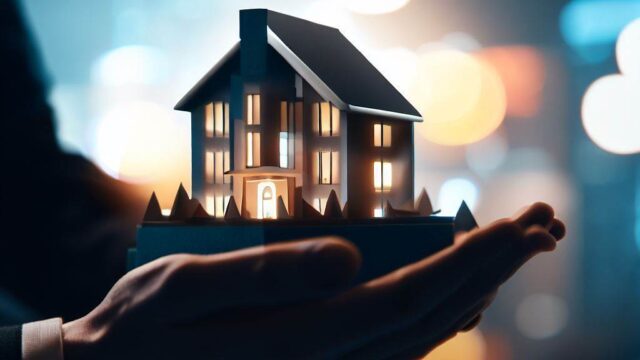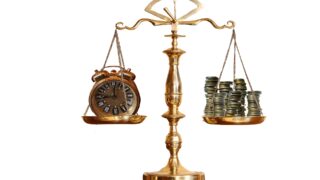In this article, we will discuss nine essential points to check regarding the common areas and management of an apartment before making a purchase decision.
When considering buying an apartment, what points do you prioritize? Are you perhaps only focusing on factors like sunlight and views?
It’s important to remember that purchasing an apartment involves not only the location and view but also the quality of management.
While the layout of the apartment and the view are important factors, it’s crucial to prioritize the peace of mind that comes with a well-managed property, especially when thinking about long-term residency.
The Reliability of This Article
This article was written by someone with the following background:
- Over 15 years of experience in real estate brokerage at a well-known major real estate agency
- Successfully closed more than 300 real estate brokerage cases to date
- A certified 1st Class Financial Planner
- A Certified Financial Planner (CFP)
- A licensed Real Estate Transaction Specialist
If you’re interested, we’ve also written an article on how to check for important points in an apartment using floor plans. We encourage you to take a look at that as well. Additionally, we’ve covered the key factors to consider when inspecting land and detached houses in another article, so please give that a read too.
https://koenji-blog.com/hanbaizumen-ms/
https://koenji-blog.com/investigation-land/
Permissible Vehicle Dimensions for Parking
One common issue that often arises after purchasing an apartment is when the buyer owns a car, but upon moving in, they realize that their vehicle exceeds the allowable size for the parking space.
This is especially common in apartments equipped with mechanical parking systems.
Even if you don’t currently own a car, you may plan to buy one in the future. It’s essential to check the vehicle size specifications in advance, including width, height, and weight, to avoid any potential problems. Be vigilant!
Some Cases Where Pets Aren’t Allowed Despite Being Pet-Friendly
Many people nowadays consider their pets as part of their family and choose to live with them. However, when it comes to properties that allow pet ownership, it’s essential to be cautious.
Even if the floor plans of a property state that “pets are allowed,” most apartments have specific rules and regulations that may limit the size or number of pets you can keep.
Trying to conceal a pet with the idea that it’s okay as long as no one finds out can lead to significant trouble in the future if neighbors raise concerns. If you already have a pet or plan to get one, make sure to thoroughly check and comply with the rules and regulations in place.
Checking the Long-Term Repair and Maintenance Plan
In Japan, many condominiums have a “long-term repair and maintenance plan” in place to ensure the long-term well-being of the property. These plans typically involve extensive repairs such as exterior wall maintenance, corridor and staircase refurbishments, ironwork painting, and rooftop waterproofing, generally scheduled at intervals of approximately 10 to 15 years.
While this information may sometimes be posted on the aforementioned first-floor bulletin board if timing aligns favorably, it’s not always a guarantee.
In such cases, it’s advisable to request your real estate agent to show you the long-term repair and maintenance plan document. Additionally, ask to review the maintenance history to ensure that repairs have been consistently carried out.
Proper management is crucial for condominiums, so make sure to confirm whether maintenance has been diligently performed in the past and if there are solid plans for the future.
Planned Increases in Management Fees and Repair Reserve Funds
Related to the previously mentioned long-term repair plan, it’s important to understand that condominiums incur expenses for significant repairs and daily management operations. To cover these costs, condo owners contribute management fees and repair reserve funds to the management association.
One thing to be aware of, especially in smaller condominiums, is the possibility of a substantial increase in repair reserve fund contributions being planned. It’s crucial to verify these potential changes.
Even if it hasn’t been formally decided at the current stage, such increases may become topics of discussion during condominium general meetings and other related events.
Facing unexpected and significant maintenance cost increases in addition to your mortgage payments can become challenging in the future.
One important thing to note is that, similar to humans, condominiums also require increased maintenance expenses as they age. Therefore, it’s common for repair reserve fund contributions to gradually rise in most condominiums.
Engaging in a Conversation with the apartment Manager
As someone with extensive experience in the real estate industry, I consider smooth communication with the apartment manager to be of utmost importance. Why? Because apartment managers possess detailed information about various issues within the condominium and disputes among residents that may not be known to the management company’s representatives.
That’s right – apartment managers are the ones who know the condominium best.
In a way, apartment managers serve as the “counselors” within the condominium, acting as a point of contact for residents’ inquiries and problem resolution. In fact, in some condominiums, property managers may change frequently, which could indicate the existence of underlying issues that need attention but haven’t been brought to the surface.
apartment managers have information that is not available in the “Important Matters Inspection Report” provided by the management company. Especially from a buyer’s perspective, information obtained through dialogue with the apartment manager, such as neighborhood disputes or underlying issues within the condominium, is highly valuable and can significantly impact daily life.
When visiting a condominium for a viewing, it’s a good idea to strike up a conversation with the apartment manager if you happen to see them.
Checking Security by Changing the Time of Day
When visiting a condominium, the first point of attention should be security. Especially in large condominiums, there are many areas in common spaces such as bicycle parking and garbage collection points that require surveillance. If security cameras are not appropriately positioned, it can lead to security concerns. In fact, it’s not uncommon for situations where during the daytime, the atmosphere seems calm and peaceful, but at night, young individuals gather on the premises, leading to frequent responses from security companies or the police.
When assessing the security of a condominium, it’s essential to prioritize whether it provides an environment where you and your family can live with peace of mind.
If you are considering purchasing the property, be sure to evaluate the nighttime atmosphere in addition to daytime conditions.
The First-Floor Bulletin Board: A Treasure Trove of Information
When I visit a condominium, I have a habit of first checking the “first-floor bulletin board.” This bulletin board is a treasure trove of the latest information about the condominium, including issues like late-night noise complaints, pet ownership concerns, and summaries of planned renovation work. Moreover, in some condominiums, you can find proposals and minutes related to changes in regulations and rules, making it truly a repository of information.
Checking the Cleanliness of Common Areas
When the property manager or cleaning staff lack a strong sense of responsibility, it can significantly impact the overall quality of the condominium. When conducting on-site inspections, it’s crucial to check not only the individual units but also the cleanliness of common areas.
In particular, pay close attention to the cleanliness of areas surrounding communal mailboxes and garbage collection points. If the cleaning is inadequate and the bicycle parking area is messy with abandoned bikes, it indicates a serious issue with management.
Checking the Safety Aspects
It’s essential to pay attention to elements related to safety, such as elevators, emergency staircases, and fire safety equipment. Elevators are facilities that require costly regular maintenance and replacement, and fire safety equipment mandates semi-annual equipment inspections and annual comprehensive inspections. If these maintenance activities are not carried out properly, it could indicate insufficient budget allocation. Especially in self-managed condominiums, it’s crucial to carefully inspect these aspects.
When checking, look for stickers on elevators indicating inspection dates and make sure there are no rusted emergency bells or expired fire extinguishers, among other things.
In Conclusion
Finally, let’s summarize the key points to consider when purchasing a condominium. By understanding and thoroughly checking these checkpoints, you can confidently choose the right condominium for you.
Summary of Condominium Purchase Checkpoints:
- Check for vehicle size restrictions.
- Be aware of pet-friendly policies and limitations.
- Confirm the long-term repair and maintenance plan.
- Look into potential increases in management fees and repair funds.
- Initiate a conversation with the property manager.
- Assess security measures by changing the time of your visit.
- Recognize the wealth of information on the first-floor bulletin board.
- Scrutinize the cleanliness of shared spaces.
- Focus on safety considerations.
We hope you find the perfect condominium that meets your needs! Thank you for reading until the end.











